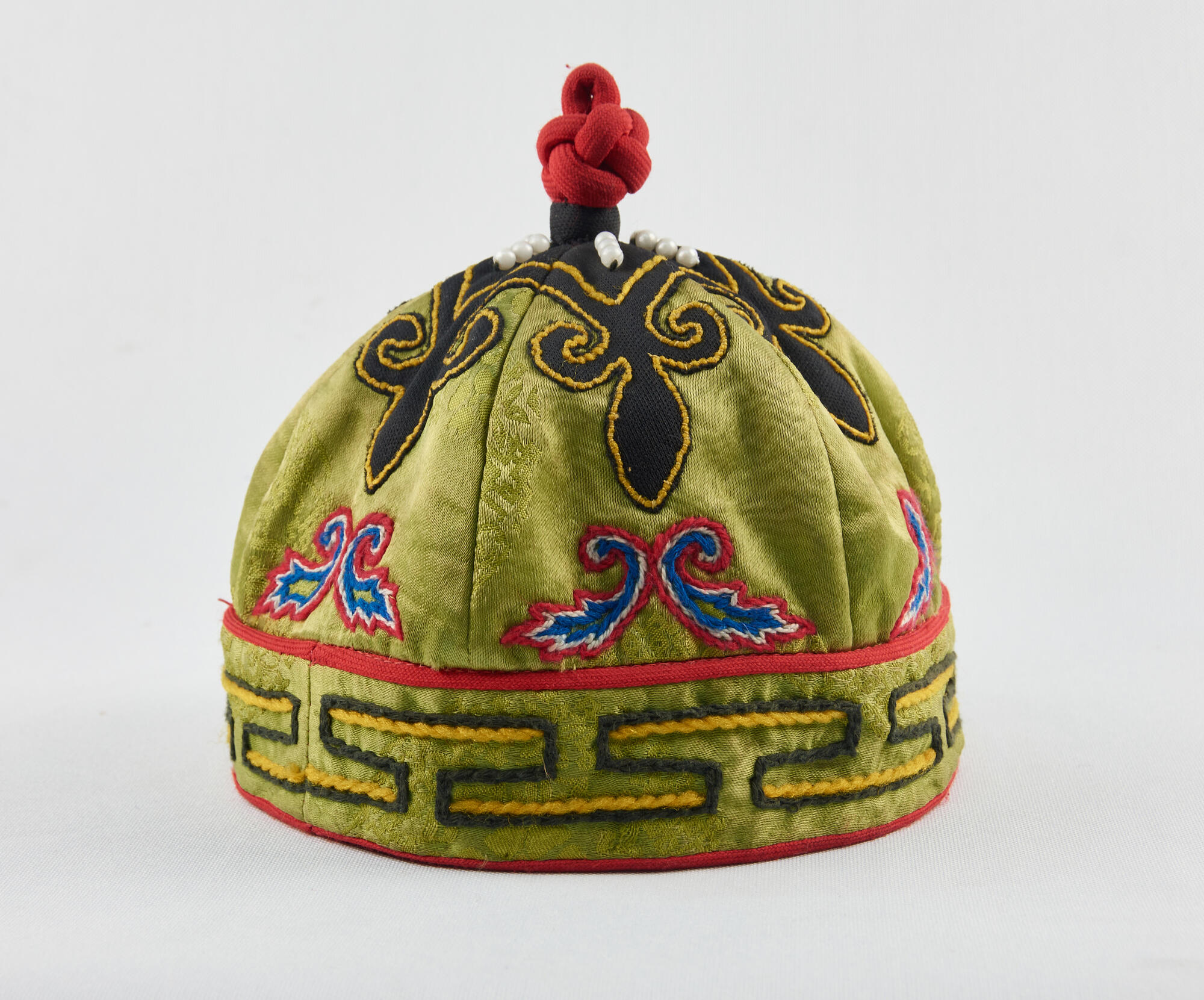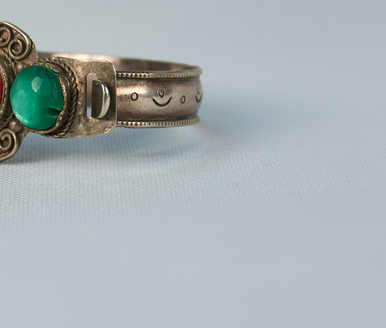Tuvan headdresses were quite diverse. The author of the book “Tuvan traditional costume” Marta Olegovna Siyanbil divides all Tuvan headdresses into five groups:
Dovurzak
- with a conical crown of “kalbak bort” type;
- skullcap of “dovurzak bort” type;
- with a pointed crown of “shish bashtyg bort” type;
- with a pointed crown of “ovaadai bort” type;
- diverse headdresses.
Tuvan men and women wore 32 types of headdresses (not including ritual ones) depending on their social status, age, and occasion.
The ethnographers Sevyan Israilievich Weinstein and
Mikhail Vasilievich Kryukov made an assumption of the ancient Turkic origin of
some hats in their article “On the Appearance of the Ancient Turkic people”:
There are no descriptions of the ancient Turkic headdresses preserved in the written sources, but stone sculptures give us a sufficiently complete picture of them. Many of the statues depict headdresses, which Evtyukhova [Lydia Alekseevna Evtyukhova, a researcher of archaeological monuments in Siberia and Central Asia] divides into four types: rounded hats, probably made of fur; truncated cone-shaped headdresses; ear-flaps hats and, finally, caps with a pointed top and a projection that goes down to the back of the head. Similar types of headdresses were common until recently among many peoples of Central Asia, Mongols and Tuvans.
The Tuvan national dovurzak hat was a universal headwear in the warm season. Until the early 20th century, dovurzaks were widely worn by Tuvans. They sewed this hat from felt, cloth and Chinese silk. Dovurzak hats were worn by both children and adults regardless of their social and family status. In particular, representatives of the Tuvan nobility wore these hats at home until the late 19th century. Most traditional headdresses were models based on the dovurzak hat, made of felt, lamb, sheep or animal skins (fox, sable, otter).
Dovurzak hats were very popular. They were made of six panels, with a rim around the head, reminiscent of a skullcap. At the top of the headdress there is a red woven cone, called “doshka”, which can easily reveal a knotted version of the Tuvan pattern “knot of happiness”. Expensive hats were decorated with embroidery, beautiful braid along the seams and stripes, as well as applications of national motifs. The “knot of happiness” was replaced or supplemented by another symbol of happiness — a butterfly, which can often be found in girls’ headdresses.




